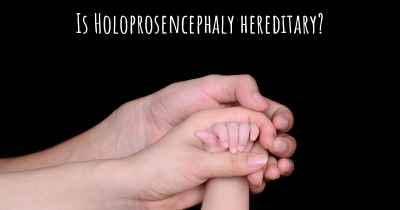What is the history of Holoprosencephaly?
When was Holoprosencephaly discovered? What is the story of this discovery? Was it coincidence or not?

Holoprosencephaly: A Historical Overview
Holoprosencephaly (HPE) is a rare congenital brain malformation characterized by incomplete separation of the cerebral hemispheres during early embryonic development. This condition was first described in medical literature in the early 19th century, although its true nature and underlying causes were not fully understood until much later.
Early Observations and Classification
The earliest recorded cases resembling HPE date back to the early 1800s. In 1826, French physician Étienne Geoffroy Saint-Hilaire described a condition called "cyclopia" in animals, characterized by a single eye in the center of the forehead. This observation laid the foundation for understanding the spectrum of HPE-related malformations.
It was not until the mid-20th century that HPE was recognized as a distinct human disorder. In 1963, Dr. David W. Smith, an American pediatrician, coined the term "holoprosencephaly" to describe a group of brain malformations characterized by varying degrees of fusion of the cerebral hemispheres. He classified HPE into four subtypes based on the severity of brain division: alobar, semilobar, lobar, and middle interhemispheric variant.
Advancements in Understanding Causes
Over the years, researchers made significant progress in unraveling the causes and mechanisms underlying HPE. In the 1980s, it was discovered that HPE could be associated with chromosomal abnormalities, particularly trisomy 13 (Patau syndrome). This finding provided valuable insights into the genetic basis of the condition.
Further research revealed that HPE could also occur as part of various genetic syndromes, such as Smith-Lemli-Opitz syndrome and trisomy 18. These discoveries highlighted the complex interplay between genetic factors and environmental influences in the development of HPE.
Advances in Molecular Genetics
The advent of molecular genetics in the late 20th century revolutionized our understanding of HPE. In the 1990s, researchers began identifying specific genes associated with HPE. The Sonic Hedgehog (SHH) gene, located on chromosome 7, was found to play a crucial role in early brain development and was implicated in many cases of HPE.
Subsequent studies identified additional genes involved in HPE, including ZIC2, SIX3, and TGIF1. These genes are critical for the proper patterning and development of the forebrain, and mutations in these genes can disrupt normal brain division, leading to HPE.
Advancements in Imaging and Prenatal Diagnosis
The development of advanced imaging techniques, such as magnetic resonance imaging (MRI), has greatly improved the diagnosis and understanding of HPE. MRI allows for detailed visualization of brain structures, enabling clinicians to accurately classify the severity of HPE and assess associated abnormalities.
Prenatal diagnosis of HPE has also become possible with the advent of ultrasound and fetal MRI. Early detection allows parents to make informed decisions and seek appropriate medical care and support.
Current Research and Treatment
While significant progress has been made in understanding HPE, there is still much to learn. Ongoing research aims to uncover additional genetic and environmental factors contributing to HPE, as well as potential therapeutic interventions.
Currently, treatment for HPE focuses on managing associated symptoms and complications. This may involve a multidisciplinary approach, including neurosurgery, physical therapy, speech therapy, and supportive care.
Conclusion
Holoprosencephaly has a rich history of scientific discovery and medical advancements. From its early descriptions as "cyclopia" to the identification of specific genes involved in brain development, our understanding of HPE has come a long way. Ongoing research continues to shed light on this complex condition, offering hope for improved diagnosis, treatment, and support for individuals and families affected by HPE.








